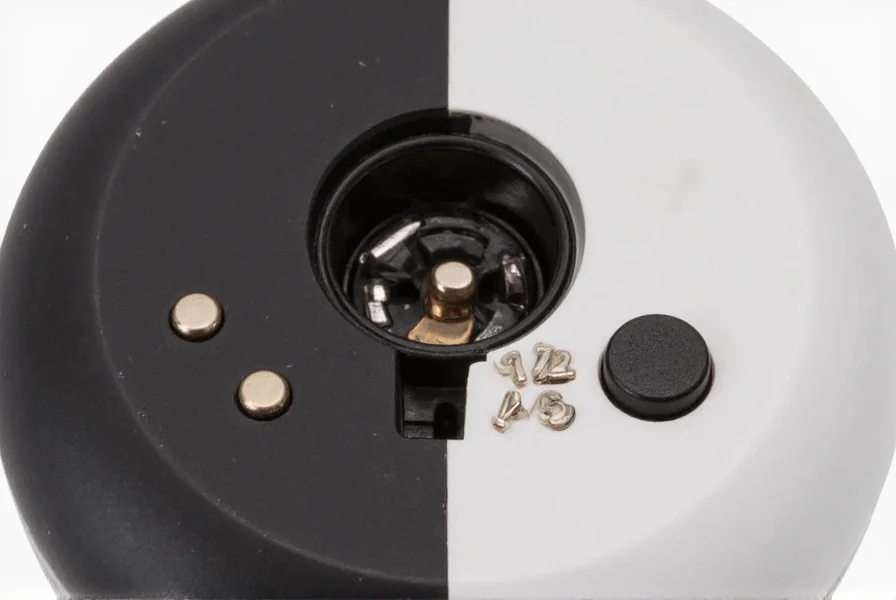For home cooks and professional chefs alike, the right grinding tool can transform ordinary seasoning into a culinary highlight. Battery powered salt and pepper grinders have gained popularity as a practical solution that combines convenience with precision. Unlike traditional manual mills that require physical effort to operate, these electric models deliver consistent results with the simple press of a button.
How Battery Powered Grinders Work
Inside each battery powered salt and pepper grinder lies a compact electric motor connected to either ceramic or stainless steel grinding mechanisms. When activated, the motor rotates the grinding mechanism at consistent speeds, producing uniform particle sizes regardless of the user's physical strength. The ceramic mechanisms, found in higher-end models, maintain sharpness longer and resist corrosion from salt, while stainless steel options offer durability at a more accessible price point.
Most units feature a simple activation method—typically a button on the top or side—that engages the motor for 2-5 seconds per press. This controlled operation prevents over-grinding and conserves battery life. The grinding chamber sits directly above the mechanism, allowing freshly ground seasoning to fall straight onto your dish with minimal waste.

Key Benefits Over Manual Alternatives
The primary advantage of battery operated salt and pepper grinder systems is accessibility. For individuals with arthritis, carpal tunnel syndrome, or other hand mobility limitations, these grinders eliminate the twisting motion required by traditional mills. This ergonomic benefit makes seasoning accessible to a wider range of users without compromising on freshness.
Consistency represents another significant benefit. Manual grinding often produces uneven results as hand pressure varies during use. Battery powered models deliver the same grind quality from the first twist to the last, ensuring your dishes receive uniform seasoning. This consistency proves particularly valuable when preparing recipes where precise seasoning matters.
Time efficiency also contributes to their popularity. In fast-paced cooking environments, the ability to season multiple dishes quickly without hand fatigue makes these grinders valuable kitchen tools. The instant operation means you can focus on cooking rather than the physical act of grinding.
Essential Features to Consider
When evaluating different battery powered pepper mills for kitchen use, several features warrant careful consideration:
| Feature | Why It Matters | Recommended Option |
|---|---|---|
| Grind Adjustment | Determines versatility for different dishes | External dial with multiple settings |
| Grinding Mechanism | Affects durability and performance | Ceramic for salt, stainless steel for pepper |
| Battery Type | Impacts replacement frequency and cost | AA batteries (longer life than AAA) |
| Capacity | Determines refilling frequency | 4-6 ounce chambers for regular use |
| Ergonomic Design | Affects comfort during use | Non-slip grip with accessible button |
Adjustable grind settings prove particularly valuable for culinary versatility. Fine settings work well for finishing dishes or incorporating seasoning into sauces, while coarse settings provide texture and visual appeal for steaks or salads. The best battery powered pepper mills offer easily accessible adjustment mechanisms that don't require disassembly.
Maintenance Requirements
Proper care extends the lifespan of battery operated spice grinders significantly. Regular cleaning prevents seasoning buildup that can clog mechanisms and affect performance. For ceramic mechanisms, avoid washing with water as moisture can damage the internal components. Instead, use a small brush to remove residue from the grinding chamber and exterior surfaces.
Battery replacement represents a simple but crucial maintenance task. Remove batteries when not in use for extended periods to prevent corrosion. Most quality models include battery compartment indicators that show when power is running low, preventing mid-use failures during meal preparation.
Refilling requires attention to detail—always use dry peppercorns and salt crystals appropriate for grinding. Avoid pre-ground seasonings or moist ingredients that can damage the mechanism. When refilling, hold the grinder upside down to prevent seasoning from entering the battery compartment.
Comparison with Alternative Grinding Methods
Battery powered models occupy a middle ground between manual and rechargeable electric grinders. Compared to manual mills, they require less physical effort while maintaining the freshness advantage of grinding spices just before use. Unlike rechargeable models, they don't require dedicated charging time and can operate immediately when needed.
For those considering long-term value, battery powered options often prove more economical than rechargeable alternatives. While the initial cost might be similar, rechargeable models eventually require battery replacement when their internal batteries degrade. Standard battery models simply need fresh AA or AAA batteries, which most households already have on hand.
The environmental impact deserves consideration too. While battery disposal requires proper recycling, the longevity of quality models means fewer replacements over time compared to cheaper manual mills that might break or wear out. Look for models with replaceable grinding mechanisms to extend the grinder's useful life.
Troubleshooting Common Issues
Even the best battery powered salt and pepper grinders occasionally encounter issues. Inconsistent grinding usually indicates either low battery power or seasoning buildup in the mechanism. Replace the batteries first, then clean the grinding chamber if the problem persists.
When grinders stop working entirely, check for common problems: corroded battery contacts, seasoning clogs in the mechanism, or worn grinding components. Most quality models allow access to the grinding mechanism for cleaning without requiring complete disassembly.
For salt grinders specifically, moisture-related clogs represent a frequent challenge. Always use dry salt crystals and store the grinder in a low-humidity environment. If clogs occur, disassemble according to manufacturer instructions and clean with a small brush—never water, which can damage internal components.
Conclusion
Battery powered salt and pepper grinders offer a practical solution for home cooks seeking convenience without sacrificing seasoning quality. Their accessibility benefits make them valuable for users with physical limitations, while their consistent performance appeals to culinary enthusiasts. When selecting a model, prioritize adjustable grind settings, quality grinding mechanisms, and ergonomic design to ensure long-term satisfaction.
By understanding how these grinders work and what features matter most, you can make an informed decision that enhances your cooking experience. Whether you're seasoning a simple salad or preparing an elaborate meal, the right battery operated salt and pepper grinder delivers consistent results with minimal effort.
Frequently Asked Questions
Can I use the same battery powered grinder for both salt and pepper?
While technically possible, it's not recommended to use the same grinder for both salt and pepper. Salt's corrosive properties can damage mechanisms designed for pepper, and cross-contamination affects flavor purity. Most manufacturers design separate mechanisms optimized for each seasoning type—ceramic for salt (corrosion-resistant) and stainless steel for pepper.
How long do batteries typically last in electric salt and pepper grinders?
Battery life varies by usage but typically lasts 6-12 months with regular kitchen use. Factors affecting battery longevity include grind frequency, duration of each activation, and battery quality. High-quality alkaline batteries generally outperform cheaper alternatives. Most models include low-battery indicators to prevent unexpected failures during meal preparation.
What's the difference between battery powered and rechargeable spice grinders?
Battery powered models use standard AA or AAA batteries that are easily replaced, while rechargeable models have built-in lithium-ion batteries requiring periodic charging. Battery models work immediately when needed without charging downtime but require occasional battery replacement. Rechargeable models eliminate battery waste but eventually need battery replacement when internal batteries degrade after several years of use.
Why does my battery powered pepper grinder produce inconsistent grind sizes?
Inconsistent grinding typically indicates low battery power or seasoning buildup in the mechanism. Replace the batteries first, as weak power causes the motor to rotate inconsistently. If the problem persists, clean the grinding chamber according to manufacturer instructions. Also verify that your grind setting hasn't shifted accidentally during use or cleaning.
Can I grind other spices besides salt and pepper in battery operated grinders?
Most battery powered grinders work well with whole spices like coriander, cumin, or mustard seeds, but check your manufacturer's recommendations first. Avoid oily seeds (like sesame) or moist ingredients that can damage the mechanism. Dedicated spice grinders typically feature wider chambers and stronger mechanisms than standard salt and pepper models for handling diverse spices.











 浙公网安备
33010002000092号
浙公网安备
33010002000092号 浙B2-20120091-4
浙B2-20120091-4